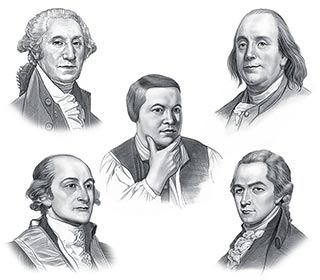The Battle of Long Island ended in defeat for General Washington and Patriot troops. Soon after the battle a fire broke out in New York City and destroyed over 300 buildings.
Overview and Summary of the Battle of Long Island
The Battle of Long Island is also referred to as the Battle of Brooklyn Heights and took place on Tuesday, August 27, 1776 at Long Island, New York. The very day of the evacuation of British forces following the Siege of Boston on March 17, 1776, George Washington ordered 5 regiments of the Colonial Army to New York. The American troops were positioned on the outskirts of New York City on a series of hills in Brooklyn, he was intent on defending New York falling to the British, but knew he would not be able to withstand a siege. The new British commander-in-chief was General William Howe who had led in the field at the Battle of Bunker Hill. The British first sailed to Halifax and did not begin the campaign in New York until the end of August. The British force consisted of 400 warships, each ship was equipped with 16 cannon and carried 1000 troops ready to storm the beaches after landing. General William Howe landed his soldiers, bolstered by German Hessian mercenaries, on Long Island smashing the militia's camps with cannonball fire. He was able to divide the Continental Army in two and captured one part of it. This strategic success brought the British to the foot of Brooklyn Heights. On the top of Brooklyn Heights was a fort. Howe delayed attacking the fort which enabled Washington time to retreat and were safely ferried the rest of the American army across to New York. When the British eventually marched to the attack, there was no one left in the fort on Brooklyn Heights. The British Army then stormed through the small city of New York, setting it ablaze.
The main groups of the Continental Army retreated from New York City but a small band of American Sharpshooters hid 30ft off of the main trail looking for the British as they marched after the American militia. The colonial snipers broke the rules of war and aimed not at the soldiers but fired on the officers on horseback. These tactics were highly successful as without the commands from their offices the British troops were thrown into confusion. The British troops retreated to the safety of New York City but had achieved victory in the Battle of Long Island, New York. The next major conflict between the two armies would be the Battle of White Plains.
The Importance and Significance of the Battle of Long Island
Significance of the Battle of Long Island: The significance of the conflict was that U.S. forces were forced to retreat to Manhattan, then New Jersey. However, their defensive tactics proved to be highly successful against the British.
